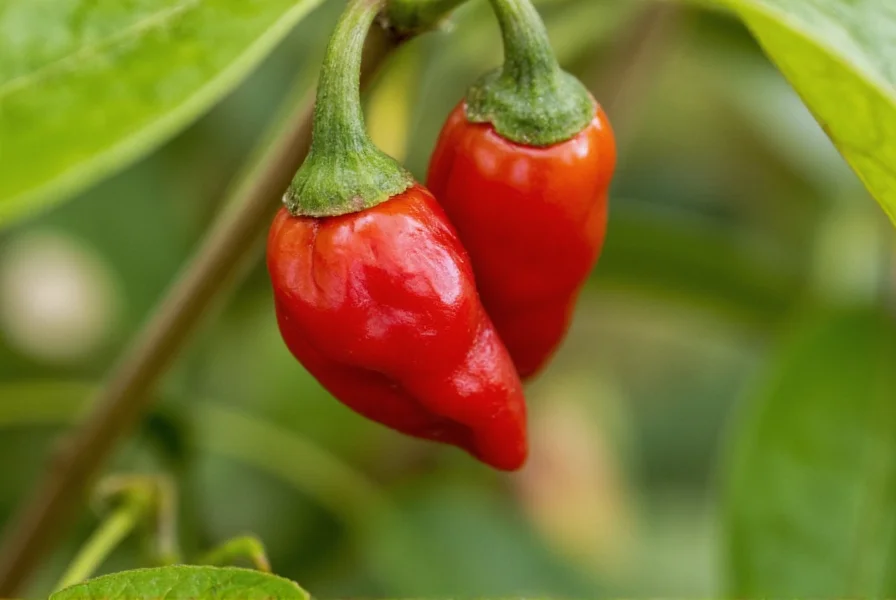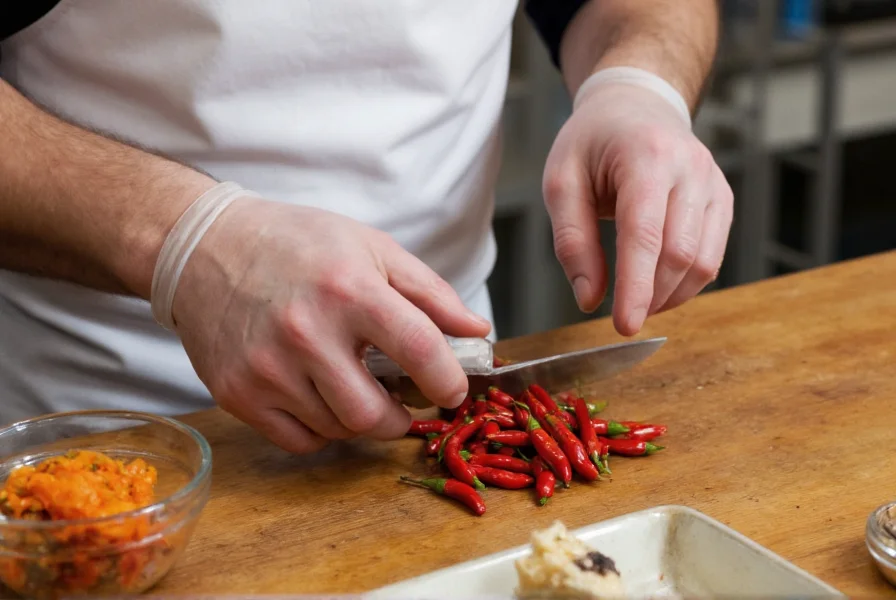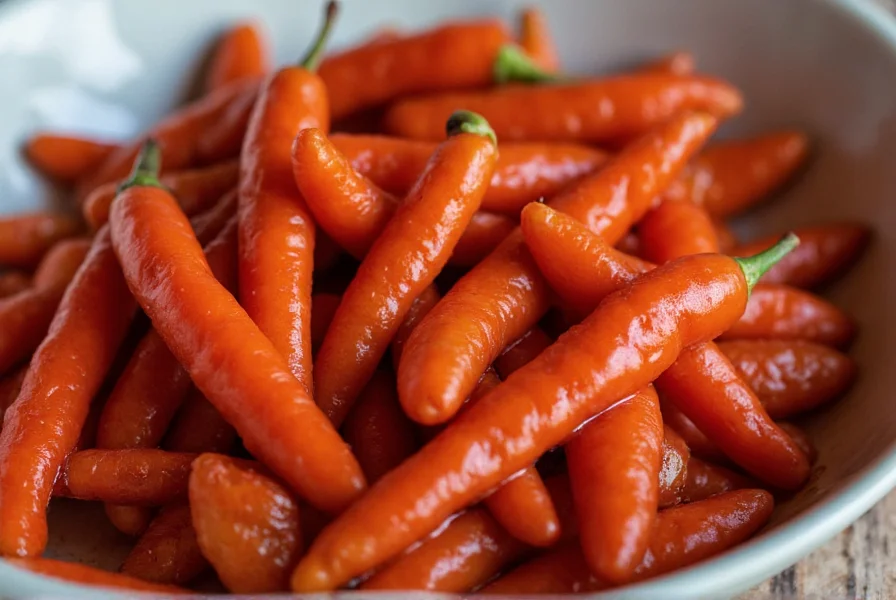The Tasmanian chili pepper has gained attention among heat enthusiasts for its remarkable balance of intense spiciness and complex flavor. Unlike many super-hot varieties that sacrifice taste for heat, this Australian-developed cultivar offers a unique culinary experience that has made it increasingly popular among home growers and professional chefs alike.
Origin and Development
Contrary to what its name suggests, the Tasmanian chili wasn't discovered in the wilds of Tasmania. Australian horticulturists deliberately bred this hybrid variety by crossing several hot pepper strains to create a plant with exceptional heat characteristics while maintaining garden-friendly growth habits. The "Devil" in its alternative name references both Tasmania's famous marsupial and the pepper's formidable heat level.
Physical Characteristics and Heat Profile
Tasmanian chili peppers typically measure 2-3 centimeters in length with a distinctive crumpled appearance. They mature from green to a vibrant red, developing their full heat potential during this transition. With a Scoville rating between 800,000 and 900,000 units, they sit firmly in the super-hot category—approximately 20-40 times hotter than a standard habanero pepper.
| Pepper Variety | Scoville Heat Units | Relative Heat |
|---|---|---|
| Tasmanian Devil chili | 800,000-900,000 | 20-40x habanero |
| Habanero | 100,000-350,000 | Baseline |
| Carolina Reaper | 1,400,000-2,200,000 | 1.5-2x Tasmanian |
| Jalapeño | 2,500-8,000 | 1/100th Tasmanian |
What distinguishes Tasmanian chili from other super-hots is its flavor complexity. Before the intense heat registers, you'll notice distinct tropical fruit notes—reminiscent of mango and citrus—with earthy undertones. This flavor profile makes it particularly valuable for hot sauces where taste matters as much as heat.

Cultivation Requirements
Gardeners interested in growing Tasmanian Devil chili plants should note their relatively compact growth habit, typically reaching 60-90 centimeters in height. This makes them excellent candidates for container gardening, even in temperate climates with shorter growing seasons.
Key cultivation considerations include:
- Temperature needs: Requires warm conditions (21-32°C) for optimal growth
- Germination: Seeds need 25-30°C with consistent moisture (may take 3-6 weeks)
- Sunlight: Minimum 6-8 hours of direct sun daily
- Soil: Well-draining mix with pH 6.0-7.0
- Watering: Regular but avoid waterlogging
For those wondering how to grow Tasmanian chili in cooler climates, starting seeds indoors 8-10 weeks before the last frost date provides the necessary head start. Using black plastic mulch in garden beds helps retain soil warmth, while container growing allows plants to be moved indoors when temperatures drop.
Culinary Applications
The Tasmanian chili flavor profile lends itself to various culinary applications beyond simply adding heat. Chefs appreciate how its fruity notes complement rather than overwhelm dishes. When using this super-hot pepper, remember that a little goes a very long way—typically just a few seeds or a small slice provides sufficient heat for an entire dish.
Popular uses include:
- Specialty hot sauces where complexity matters
- Infused oils and vinegars
- Meat rubs for barbecue
- Small additions to salsas and chutneys
- Experimental craft beers and spirits
When handling Tasmanian chilies, always wear gloves and avoid touching your face. The capsaicin concentration is high enough to cause significant irritation to sensitive areas. Proper ventilation is essential when cutting or processing these peppers.
Availability and Substitutes
Finding where to buy Tasmanian chili seeds can be challenging outside Australia. Specialty online seed retailers and hot pepper enthusiast communities are your best sources. Some Australian nurseries ship internationally, though customs restrictions may apply in certain countries.
If you're unable to source authentic Tasmanian chili, suitable substitutes include:
- Trinidad Scorpion peppers (similar heat with different flavor notes)
- Naga Viper peppers (comparable heat level)
- Dorset Naga (slightly less heat but similar fruity profile)
Understanding how hot is Tasmanian chili compared to habanero helps determine appropriate substitution ratios. Since it's approximately 20-40 times hotter, you'll need to use significantly less—about 1/20th to 1/40th the amount you would of habanero.

Storage and Preservation
Preserving your Tasmanian chili harvest properly ensures you can enjoy its distinctive heat throughout the year. The most effective methods include:
- Drying: String peppers or use a dehydrator at 55°C until brittle (about 12 hours)
- Freezing: Whole peppers freeze well for 6-12 months without flavor loss
- Vinegar preservation: Create hot pepper vinegar infusions
- Oil infusions: For culinary applications (requires proper food safety practices)
Dried Tasmanian chilies can be ground into powder using a dedicated spice grinder. Store in airtight containers away from light and heat to maintain potency for up to two years.
Frequently Asked Questions
How hot is Tasmanian chili compared to other super-hot peppers?
Tasmanian chili measures 800,000-900,000 Scoville Heat Units, making it significantly hotter than habaneros (100,000-350,000 SHU) but less intense than Carolina Reapers (1.4-2.2 million SHU). It's approximately 20-40 times hotter than a standard habanero pepper.
Can I grow Tasmanian chili in a container?
Yes, Tasmanian chili plants are particularly well-suited for container gardening due to their compact size (typically 60-90cm tall). Use a 5-10 gallon container with well-draining soil, and ensure the plant receives 6-8 hours of direct sunlight daily. Container growing also allows you to move plants indoors when temperatures drop below 15°C.
What's the best way to handle Tasmanian chili safely?
Always wear nitrile gloves when handling Tasmanian chilies, as the capsaicin can cause severe skin irritation. Work in a well-ventilated area, avoid touching your face, and wash all surfaces and tools thoroughly after use. Consider using safety glasses to protect your eyes from accidental contact with airborne capsaicin particles.
How long does it take for Tasmanian chili plants to produce fruit?
From seed, Tasmanian chili plants typically take 90-120 days to produce mature fruit. Germination can take 3-6 weeks due to the thick seed coat. Once established, plants will begin flowering after reaching sufficient size, with peppers maturing from green to red over 3-4 weeks after pollination.
Does Tasmanian chili have any distinctive flavor notes beyond heat?
Yes, Tasmanian chili offers a complex flavor profile with distinct tropical fruit notes (mango and citrus) and earthy undertones that precede the intense heat. This flavor complexity makes it particularly valuable for culinary applications where taste matters as much as heat level, distinguishing it from many other super-hot varieties that prioritize heat over flavor.











 浙公网安备
33010002000092号
浙公网安备
33010002000092号 浙B2-20120091-4
浙B2-20120091-4